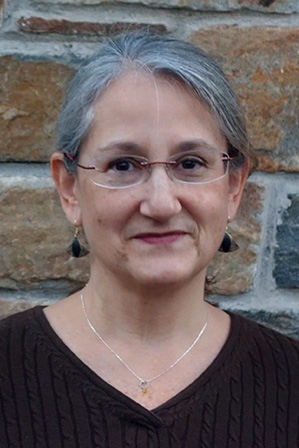Happy Anniversary, APHIS!
Letter from the Editor
BY SHAWN DORMAN

In early March, winding my way through the snaking security line at the airport on St. Thomas, USVI, on my way back to Washington, I was practically jumping up and down at the sight of one big poster after another aiming to keep U.S. pigs safe and prevent the spread of African swine fever across borders.
The posters were from the Animal and Plant Health Inspection Service, the small federal agency we celebrate this month as it turns 50. No one here in line knows what APHIS is, I thought, and they should!
I had to resist showing off the April proof pages about APHIS on my iPad as I put the device on the belt. No sense in causing a ruckus with the Department of Homeland Security, and we went on through, pork-free and clear.
It is my great pleasure now to be able to introduce our cover story on the “Small but Mighty” APHIS Foreign Service—protecting the health of U.S. agriculture and promoting trade opportunities for American producers—by veteran (and veterinarian) APHIS FSO Karen Sliter and APHIS FSO Russell Duncan.
This month’s focus is on the State Department’s new core precepts—the criteria by which State Foreign Service employees are evaluated for promotion—which were renegotiated recently for the first time in more than five years. We present two complementary vantage points on the changes, including the addition of a dedicated diversity and inclusion precept.
The first inside look is from a human resources perspective, by Director of the Bureau of Global Talent Management’s Office of Performance Evaluation Lisa Vickers, who describes how the new precepts came to be and what the changes mean.
The second, by FSO Kim McClure, a senior policy adviser in the Office of Diversity and Inclusion, describes why a diversity precept is a “game changer,” giving every employee a direct role in advancing DEIA.
And while “core precepts” may sound like internal bureaucracy, other agencies and even private sector entities should take note, as this move may (or may not) prove to be an effective step toward real cultural and institutional change.
The April feature from Donna Scaramastra Gorman, “The Little Book That Could: Inside a U.S. Embassy, Telling the Foreign Service Story for More Than a Quarter Century,” is another anniversary celebration (albeit a few months late). It’s been 25 years since the publication of the first edition of AFSA’s popular book and 10 years since the publication of the third edition—and the book keeps on selling, introducing the people and the work of the U.S. Foreign Service.
In FS Heritage, Larissa Moseley tells the story of an FSO who blazed a trail in the 1940s and ’50s: “Jeannette Lafrance: A Pioneering Foreign Service Woman.”
The FS Know-How from Robin Quinville gives tips on “How To Be a Zooming Success” in the new virtual and hybrid working world. In Reflections, Vincent Chiarello remembers “Touching the Ceiling” of the Sistine Chapel. And in the Speaking Out, Kristin Loken takes us back to Russia in 1992, when “No One Was Listening.”
This month’s reviews merit special mention: Eric Rubin on the new memoir by Marie Yovanovitch, Lessons from the Edge, and Laura Kennedy on Togzhan Kassenova’s Atomic Steppe: How Kazakhstan Gave Up the Bomb. And in a special film review, Jane Carpenter-Rock and Maryum Saifee reflect on the mid-February PBS release, “The American Diplomat.”
As we go to print with this rather positive, dare I say uplifting, edition, Russian forces push deeper into Ukraine. The impossible is becoming very real, the devastation palpable. As of mid-March, it is difficult to see a diplomatic path out of what Russian President Vladimir Putin seems to be marching into.
As a monthly, we cannot cover breaking news, but we will continue to keep a diplomacy lens on what is happening. To our readers with experience in the region, especially recently, we invite you to please share your perspective on Russia's war on Ukraine. Write to journal@afsa.org.

